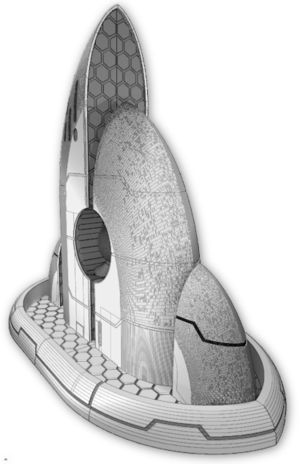
| << Display gameboard - Shrine in the Bamboo Forest 2025-05-10 | Painting the samurai fishing village set >> 2025-07-16 |
Long time, no see!! How is everybody? Many, many apologies for the delay in finishing this new set, but as some of you might know the Bag End hobbit house project has been keeping me very busy in recent months (please visit the YouTube channel to see more details about that project).
But at long last, the full set of the new Samurai Fishing Village is ready for you to take a look at! Let's dive straight in.....
▲ As you can see, this themed set is pretty HUGE! There are so many items from authentic fishing village life in feudal-era Japan that you can make pretty much any kind of game board or diorama. It will work great for territory feuds and bandit attacks, and is ideal for skirmish-level games or for adding realistic details to larger battles.

▲ Why don't we start with the warning tower? This is a rough-built wooden tower fitted with a bamboo tower and a small platform on top.

▲ The tower can be fitted with a warning bell, or a large paper lantern, and I would recommend maybe adding a short piece of brass wire for added strength (plus the bell/lantern can be swapped out as you need).
This is pretty much the only item in the set that requires print supports. I used tree supports on my printer.

▲ This is the only permanent heavy-duty terrain item in the fishing village set. It's a large wood and stone platform for a covered taiko drum structure, and would have been used for welcoming visiting dignitaries arriving by boat. The small steps would lead to the beach and dry land, while the rest of the structure would be in the sea.

▲ The large stone base section does not require additional print supports in your slicer, but you should carefully remove the built-in supports (circled in red in the photo above) with cutters.
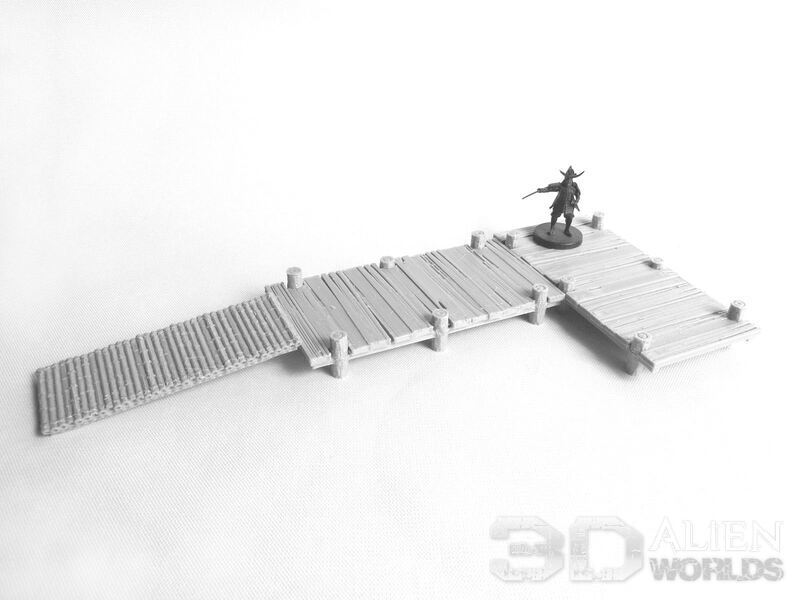
▲ Next we come to an essential part of the fishing village - the jetties. Each wooden piece is assembled from two parts, and these would be connected to the beach via those bamboo ramps.

▲ A busy fishing village would have lots of fish-related industry going on, and these shed structures would protect villagers and their catches from the hot sun and/or rain showers. Two versions of roof are included - thatched and wooden slats, both weighted down with rocks.
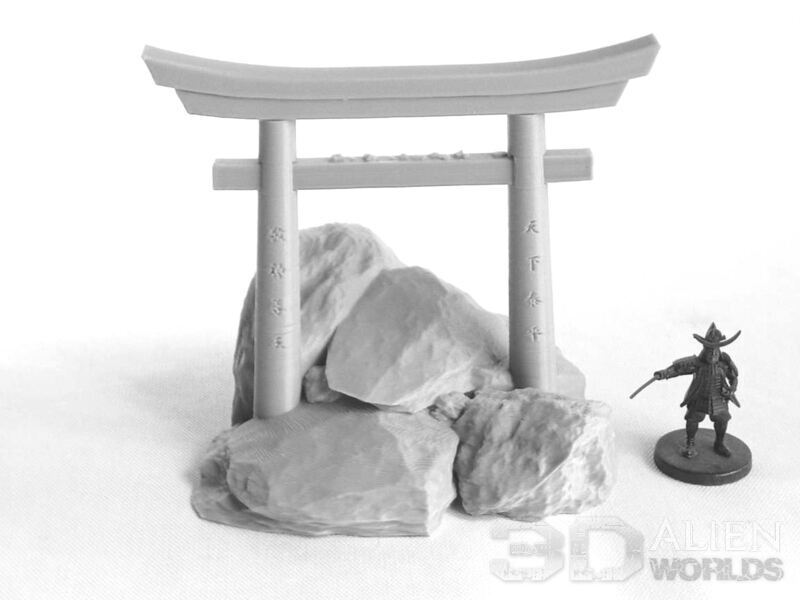
▲ This torii gate is built on large rocks, and is often found near fishing villages, where fishermen can pray for calm waters and full nets. It is designed to be used in the sea, near the beach, and makes your fishing village instantly recognisable as Japanese.

▲ After printing the torii gate main section, please remove the built-in prints (circled in red in the photo above), before inserting the horizontal bars.
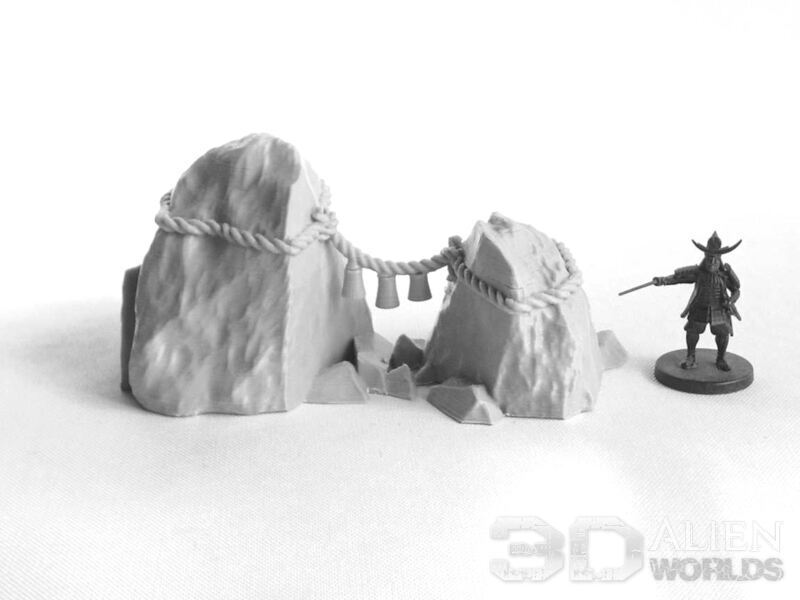
▲ Another distinctive terrain piece are these "married" rocks, commonly found in the waters near the beach.

▲ The rope connecting the two rocks already has built-in supports to enable it to print correctly, and these should be cut along the 3 red lines shown in the photo above. The tassles are printed separately, and can then be glued on to those 3 locations instead.

▲ There are 3 types of boat in this set. The small and medium fishing boats are common to fishing villages throughout Japan, but the third boat is a special military type for conveying dignitaries from sea-going ships to shore. 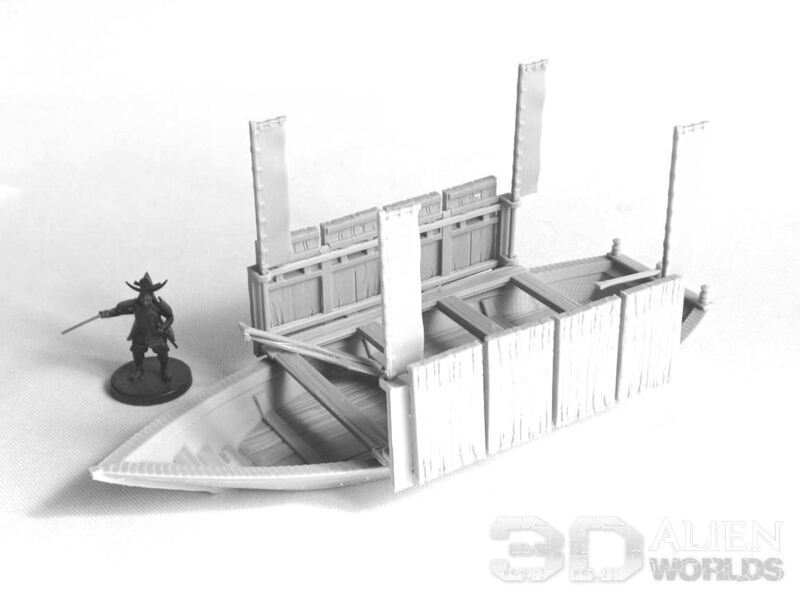
▲ It can be fitted with 4 nobori flags (blank flags are included in the set) and side pavises (blank ones also included). However, if you want to personalise your boat for your army, you can fit any of the clan nobori flags or pavises from our other sets.
▲ Start construction with these two frame pieces, which should be glued together as shown.
▲ Next, glue your choice of pavises into the slots on the side frames, as shown in the photo above.
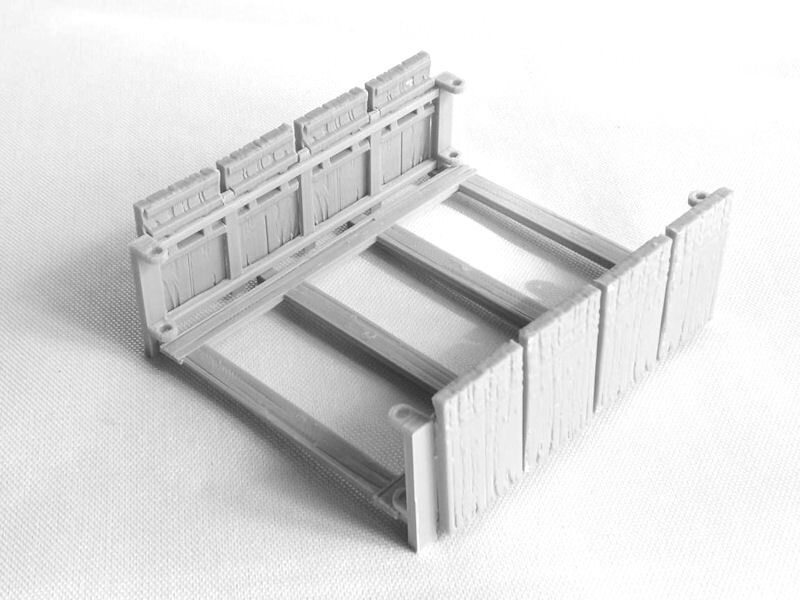
▲ The assembled frame will look like this, and is simply glued into place on the boat.

▲ The tiller can be made by cutting the end off a paddle and inserting it into the hole at the rear.
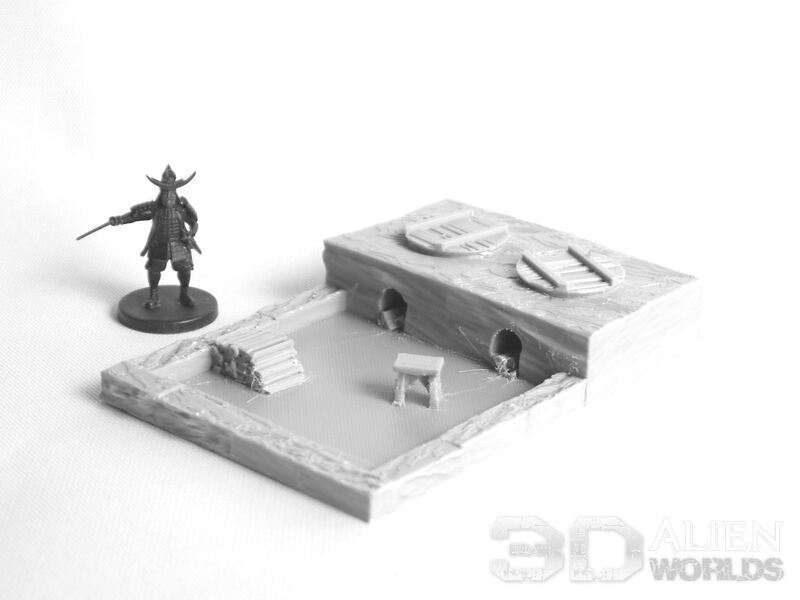
▲ Herrings are boiled in large quantities in these large wood-covered pans, and are then transferred to the next device....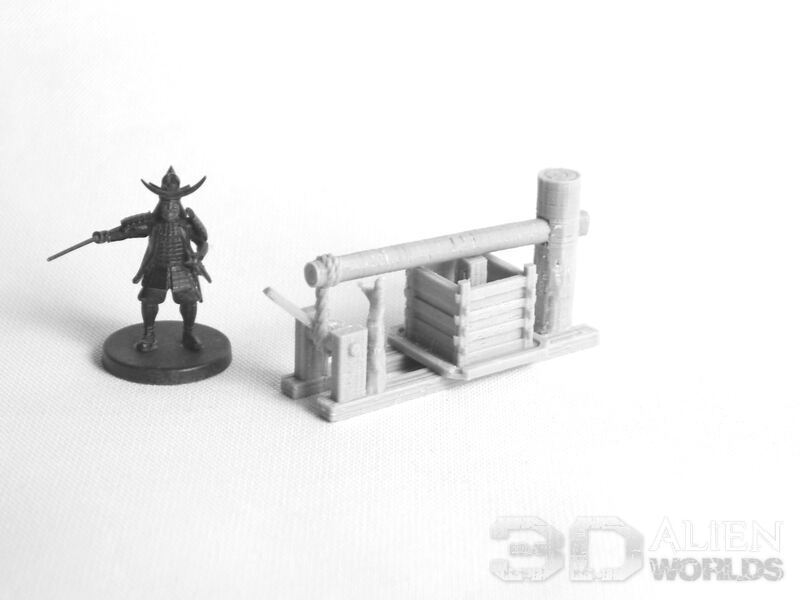
▲ The boiled herrings are poured into the wooden crate, and then pressed down using the log and winch. The oil is squeezed out into the surrounding channel, and then collected in tubs and used for lamps and soap.
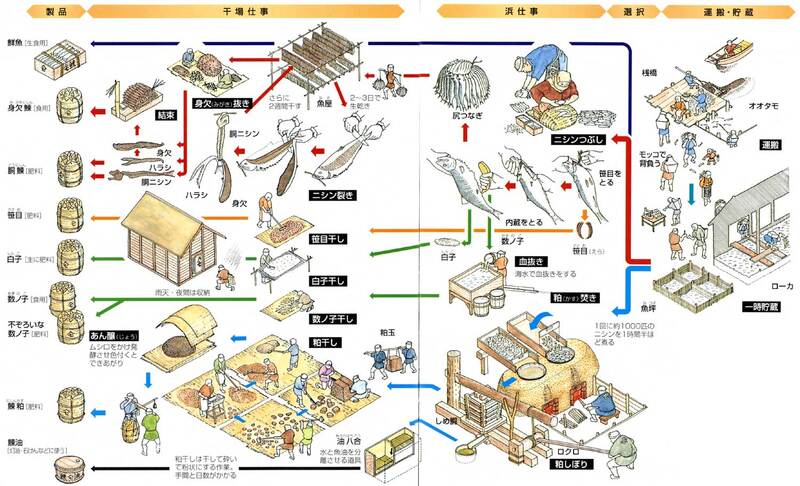
▲ The pressed herrings are then removed and dried on mats, and later used as fertiliser, as shown as the bottom of this diagram.
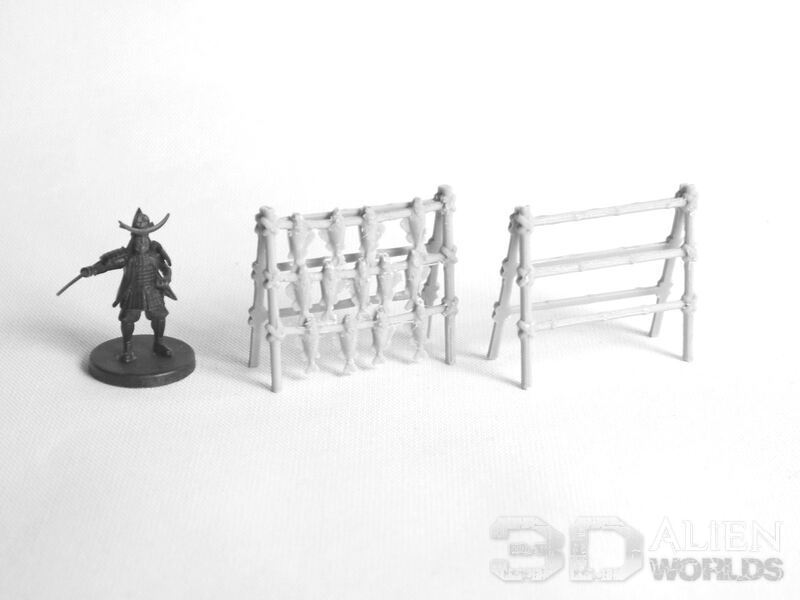
▲ The fish drying racks make very characterful scatter items. Simply print two pieces, and glue together.

▲ These large boxes and cloth-wrapped bundles are tied with ropes and used for transporting a variety of goods on both land and sea.
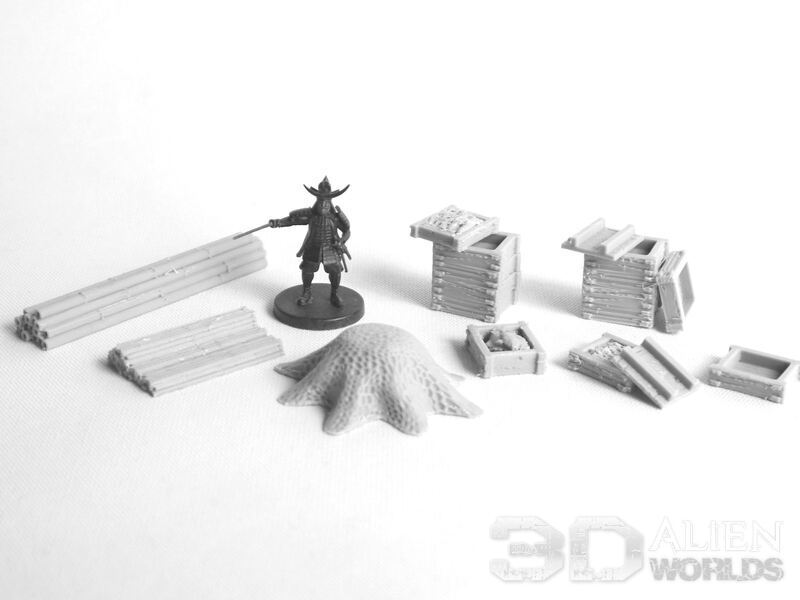
▲ Stacks of long bamboo poles would be used for many purposes in a fishing village (structures, transport, drying racks etc.), and the smaller bamboo mats would be used to wrap goods for transport. A variety of boxes with fishy contents and a pile of fishing nets are also included in the set.

▲ Tubs could be used for storing salt or other items, washing catches, and baskets were often used for transport to and from boats.
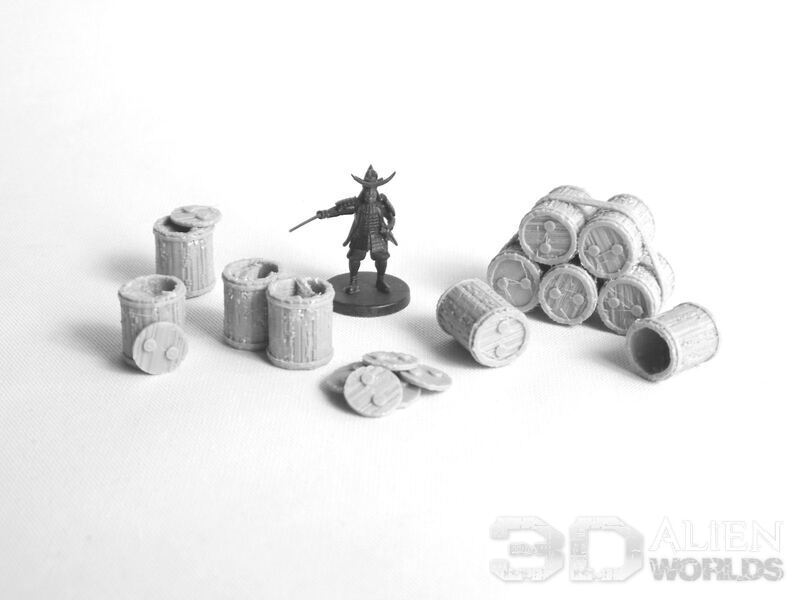
▲ Finally, a variety of barrels and lids are also included in the set, and make excellent scatter terrain for your villagers and warriors.
The Fishing Village set is on the painting desk this week, and should be ready for release very soon!
| << Display gameboard - Shrine in the Bamboo Forest 2025-05-10 | Painting the samurai fishing village set >> 2025-07-16 |
